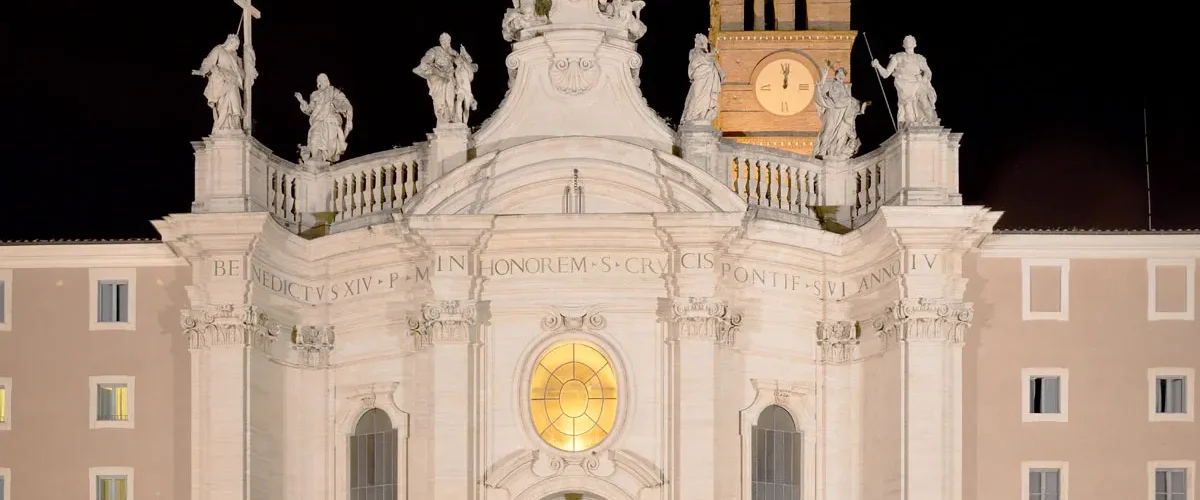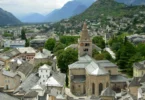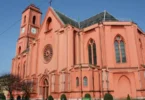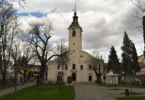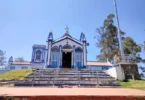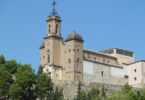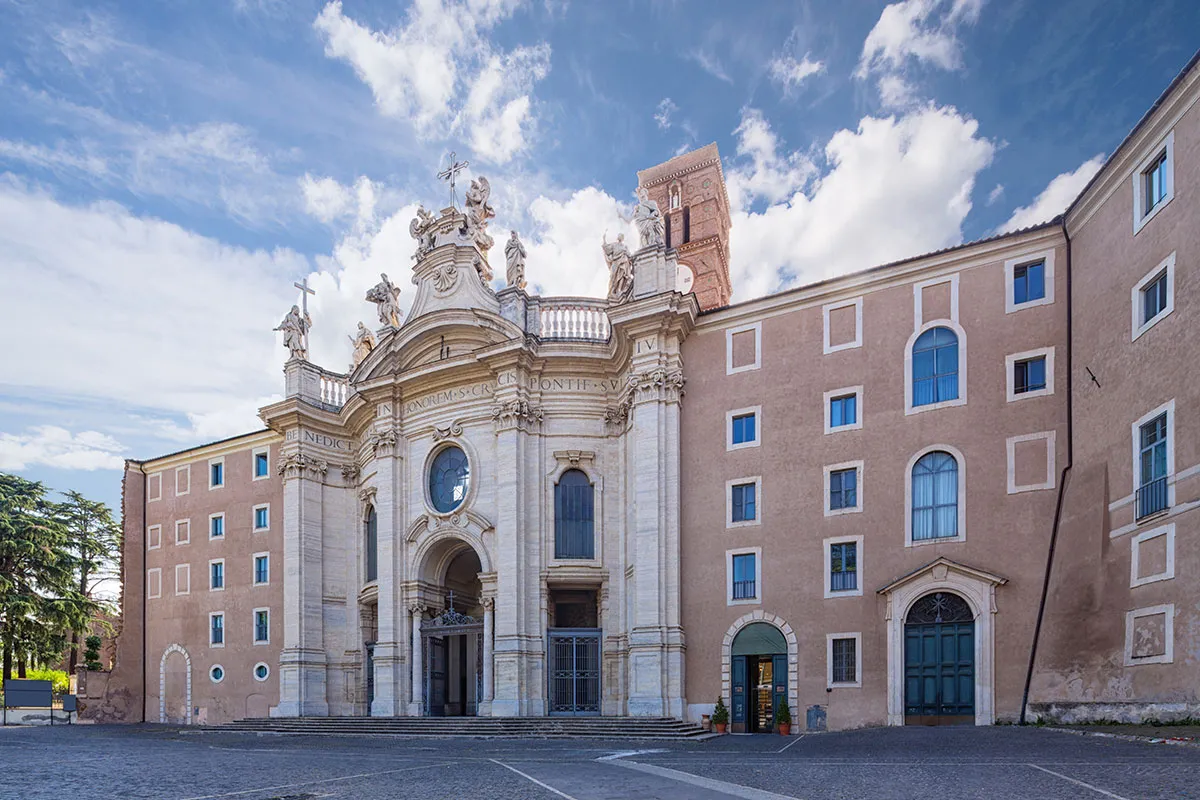
Introduction
The Basilica of the Holy Cross in Jerusalem or Basilica di Santa Croce in Gerusalemme (Latin: Basilica Sanctae Crucis in Hierusalem) is a Catholic Minor basilica and titular church in rione Esquilino, Rome, Italy. It is one of the Seven Pilgrim Churches of Rome. According to Christian tradition, circa 325, the basilica was consecrated to house the relics of Jesus Christ’s Passion. Empress Helena, the mother of Roman Emperor Constantine I, brought these relics to Rome from the Holy Land. Soil from Jerusalem covered the basilica’s floor, earning it the title “in Hierusalem.” Although not formally dedicated to the Holy Cross of Jerusalem, the basilica was regarded as being “in Jerusalem” in a symbolic manner, similar to how an embassy is considered extraterritorial today. Juan José Omella currently serves as the Cardinal Priest of the Titulus S. Crucis in Hierusalem.
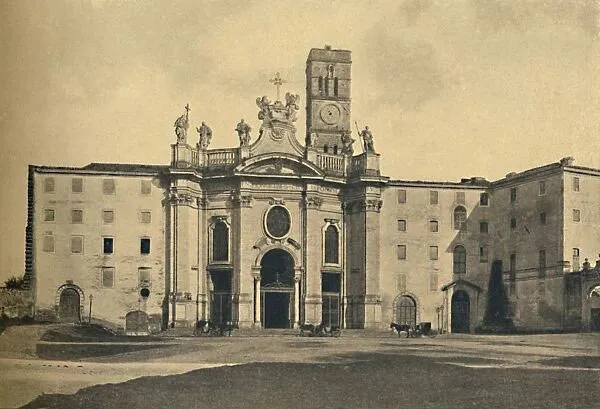
The basilica stands upon the grounds of an imperial villa known as Horti Variani ad Spem Veterem, initiated by Emperor Septimius Severus and completed by Emperor Elagabalus in the third century. This site comprised the Amphitheatrum Castrense, the Circus Varianus, and the Eleniane Baths, named after Empress Helena’s restoration efforts. It contained a residential area featuring a sizable hall (later forming the foundation for the basilica) and an apsed hall.
During the construction of the Aurelian Walls in 272, parts of the villa were dismantled. In the early 4th century, Empress Helena, mother of Constantine, chose the palace as her residence, naming it Palazzo Sessoriano. The name Sessoriano originates from the Latin word “sedeo,” meaning “to sit,” as the imperial council would convene in a hall of the palace during the late imperial era. Around 320, Helena oversaw the transformation of the large rectangular hall into a Christian basilica. Originally featuring a flat ceiling, the basilica was illuminated by twenty windows, ten on each side, and adorned with valuable marble decorations in the lower section. Helena also had soil from Calvary dispersed within.
Pope Gregory I declared the basilica of Santa Croce a titular church in 523. Despite its location on the outskirts of Rome, it became a popular pilgrimage site due to the revered relics it housed. In the eighth century, Pope Gregory II undertook its restoration. Subsequently, Pope Lucius II renovated it in the 12th century, giving it a Romanesque appearance with a nave, two aisles, belfry, and porch. The Cosmatesque pavement was added during this period. Of the original eight floors of the bell tower, only the top four are visible today; the lower four are integrated into the monastery below.
The monastery’s foundation dates back to the 10th century, with various religious communities occupying the complex over the centuries. In 2011, the Lombard Cistercians, who had overseen the basilica, were suppressed due to irregularities. Throughout the Middle Ages, the basilica attracted pilgrims, especially during Lent, with popes themselves participating in penitential walks from Saint John Lateran to Santa Croce on Good Friday to venerate the relic of the Passion of Jesus.
The vault of the basilica features a mosaic by Melozzo da Forlì, created before 1485, depicting Jesus Blessing, Histories of the Cross, and various saints. The altar hosts a large statue of St. Helena, adapted from an ancient statue of the Roman goddess Juno discovered at Ostia. Further modifications were made in the 16th century.
During his first stay in Rome in 1601, Peter Paul Rubens was commissioned to paint his first altarpiece, St. Helena with the True Cross, for one of the side chapels. Today, two of the panels are in Grasse, France, while the third, The Elevation of the Cross, is lost. The basilica acquired its late Baroque appearance under Pope Benedict XIV (1740–58), who had previously been its titular. This 18th-century renovation saw a complete overhaul of the interior, with the vault painted by Corrado Giaquinto, and new streets were opened to connect the basilica to San Giovanni in Laterano and Santa Maria Maggiore. The façade, designed by Pietro Passalacqua and Domenico Gregorini, exhibits the typical late Roman Baroque style seen in other basilicas of the era.
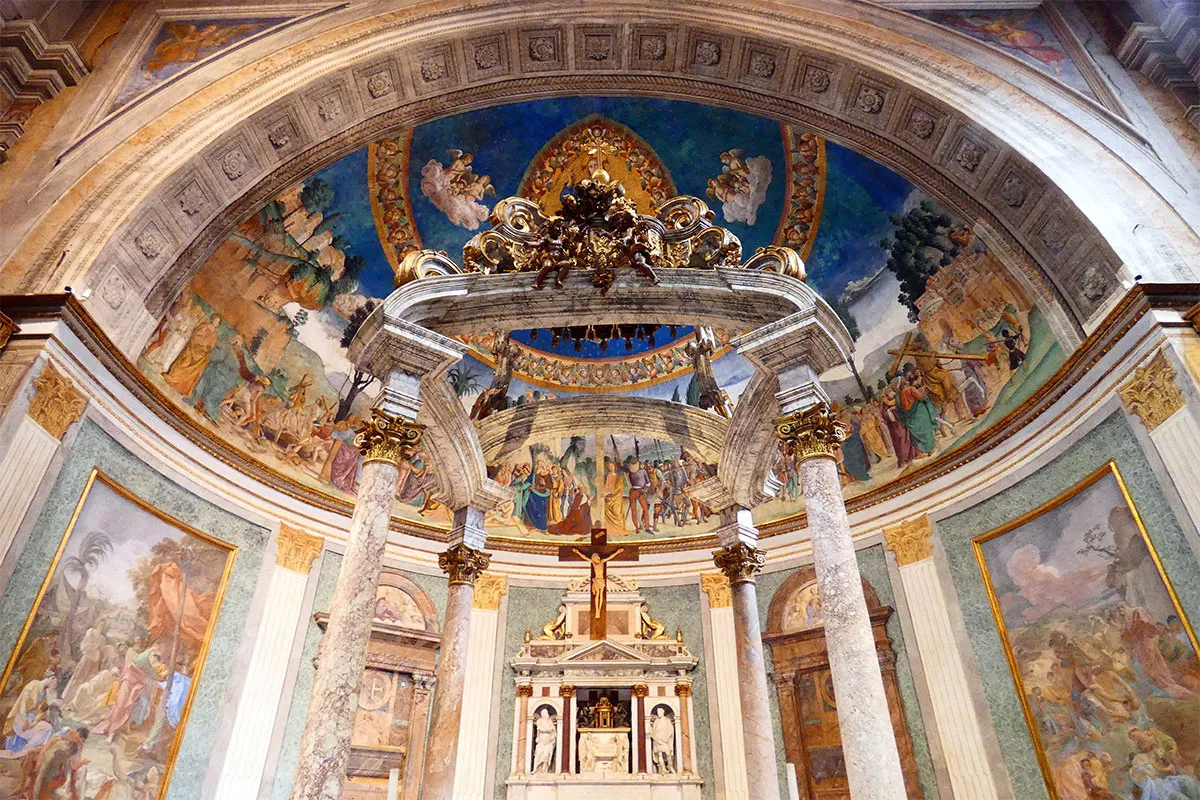
The Cappella delle Reliquie, constructed in 1930 by architect Florestano Di Fausto, houses several renowned relics, albeit with disputed authenticity. These relics include a portion of the Elogium or Titulus Crucis, which is the panel purportedly hung on Christ’s Cross, a subject either overlooked by scholars or dismissed as a medieval fabrication. Additionally, the chapel contains two thorns believed to be from the Crown of Thorns, part of a nail, the index finger of St. Thomas, and three small wooden fragments attributed to the True Cross. A larger segment of the True Cross was removed from the Basilica under the orders of Pope Urban VIII in 1629 and transferred to St. Peter’s Basilica, where it is housed alongside the monumental statue of St. Empress Helena crafted by Andrea Bolgi in 1639.
Other Art

The Basilica’s apse showcases frescoes portraying the Legends of the True Cross, typically attributed to artists Melozzo, Antoniazzo Romano, and Marco Palmezzano. Inside the Basilica’s Museum, there exists a mosaic icon believed to have been commissioned by Pope Gregory I after a vision of Christ. Nevertheless, historical records indicate that the icon was donated to the Basilica circa 1385 by Raimondo Del Balzo Orsini. Also of significance is the tomb of Cardinal Francisco de Quiñones, sculpted by Jacopo Sansovino in 1536.
Mass Timing
Weekly Masses :
Monday to Friday : 8:00 am, 7:00 pm
Weekend Masses :
Saturday : 8:00 am, 7:00 pm
Sundays : 8:00 am, 10:00 am, 11:30 am, 7:00 pm
Church Visiting Hours
Monday to Friday : 7:30 am–12:30 pm, 3:30–7:30 pm
Saturday to sunday :7:30 am–7:30 pm
Contact Info
Piazza di S.
Croce in Gerusalemme,
00185,
Roma RM,
Italy.
Phone No.
Phone: +39 06 7061 3053
Accomodation
How to reach the Sanctuary
Airway
The nearest major airport to the Basilica of the Holy Cross in Jerusalem is Rome Airport (FCO). which is 24 km away from the Shrine.
Railway
The nearest Metro to the Basilica of the Holy Cross in Jerusalem is Colosseo metro Station. which is 3.1 km away from the Shrine.

